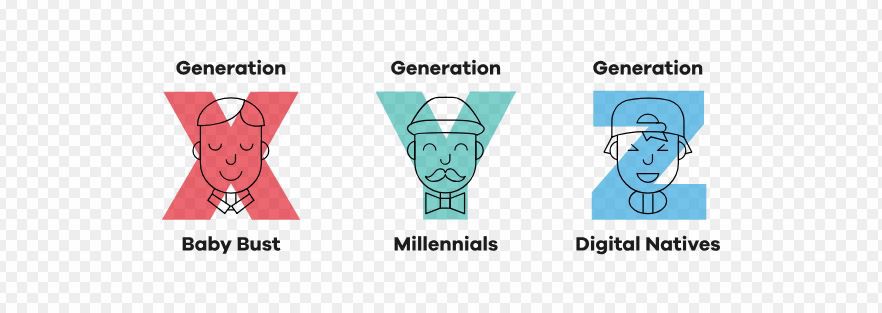News & Articles

IS YOUR BUSINESS COMMUNICATING EFFECTIVELY ACROSS THE GENERATIONS

In 2017 generation Z entered the workplace. For the first time there were five generations side by side as customers and in the workplace. How does this influence the way you communicate with customers and manage staff effectively?
Problems arise due to stereotyping and miscommunication making staff harder to manage and potentially leading to conflict. George Orwell said, ‘Each generation imagines itself more intelligent than the one before and wiser than the one after it.’ The rapid pace of change in so many areas of life can lead to friction and strife between generations is perpetuated in media headlines.
The generational cohort theory suggests that people born within 15-20 year blocks do things in a similar way because they had similar experiences in adolescence.
Pre 1945 Traditionalists or the silent generation who do not share much
1946 -1964 Baby boomers, the largest group, grew up with rationing and make do & mend
1964 – 1980 Gen X, a small group referred to as the slacker generation
1981 – 1996 Millennials, who do not like being referred to as snowflakes or entitled
1997 – 2012 Gen Z, ‘zoomers’, grew up with the internet, portable digital devices and constant available communication
These divisions are stereotypes, people are all different and the fields are too long. However generational empathy, understanding how the way a generation grew up affects their attitude can be helpful. In fact, the differences between peoples’ values and preferences are actually very small, the perceived differences are more stereotypes than reality. It is worth considering the profile of your customers and considering if you might be using stereotypes in your marketing and communication with them.
The generations have more in common than differences and a marketing strategy to appeal to a broad age range should build on common things. All generations value family most, look for appreciation and recognition, seek work life balance and are concerned about debt and savings.
In the workplace people value:
- Respect, wanting their voice to be heard and respected
- Trustworthy leaders providing clarity and availability
- Most people dislike change, not just older ones, so communication needs to be clear and careful
- Everyone wants to learn
- Feedback which is honest and supportive
- Meaningful work
Communication platforms cause the most problems with communication as the style used can cause barriers. Is the tone of emails too formal reflecting business letters for example?
The use of punctuation, capital letters and exclamation marks should be carefully considered. Gen Z can be initiated by full stops as they signify an abrupt or angry tone of voice so punctuation should only be used in longer communications. Language is evolving on different platforms in the same way younger generations have used particular words with different meaning from previous ones. Using the ‘thumbs up’ emoji has recently been declared to indicate that you as out of date. Abbreviations and ‘Text speak’ developed to speed up texting on older mobile phones are no longer used as touch screens become ubiquitous.
Considering and understanding the personal communication preferences of customers and in the workplace and how to flex them is particularly valuable in building relationships and avoiding misunderstanding.
- Is the preferred method of communication by phone, text, email, face to face or other?
- Tone, level of formality in greetings, sign offs, layout, punctuation
- Message length, one stop detailed communication or more frequent concise messages?
- Format, preferred font, spacing use of bullet points
- Grammar rules on mobiles, abbreviations, text speak
- Expected response times
- Video or audio messages or voice mail
- Use of emojis, always, occasionally or never?
Review your communication policies to identify current challenges.
Are you using the most efficient channels and are they linked?
Are the style, tone and format in agreement?
Is the length and frequency optimal for your audience?

